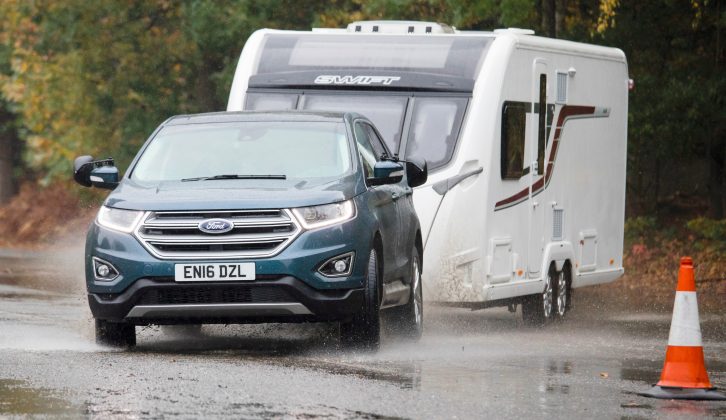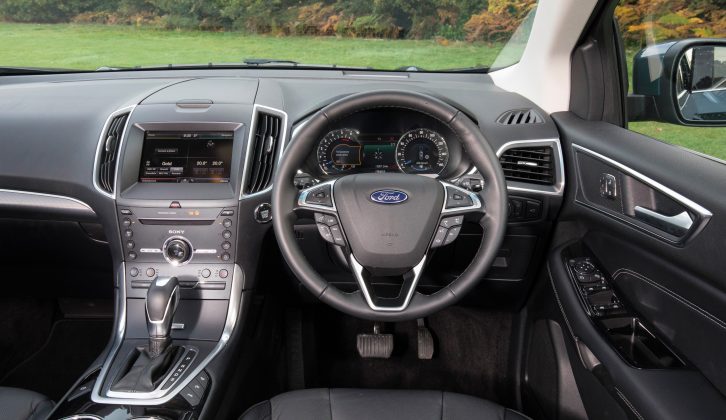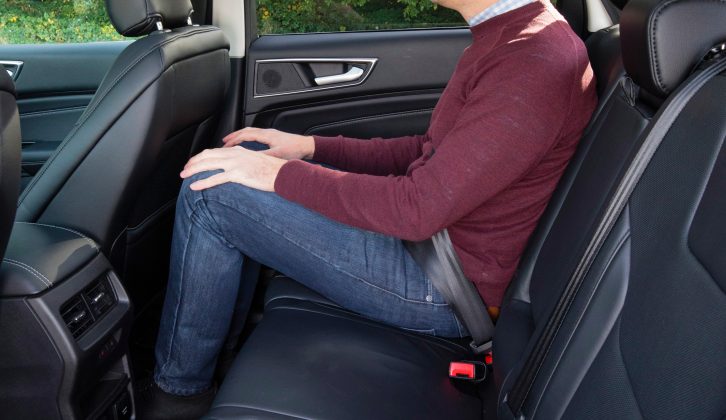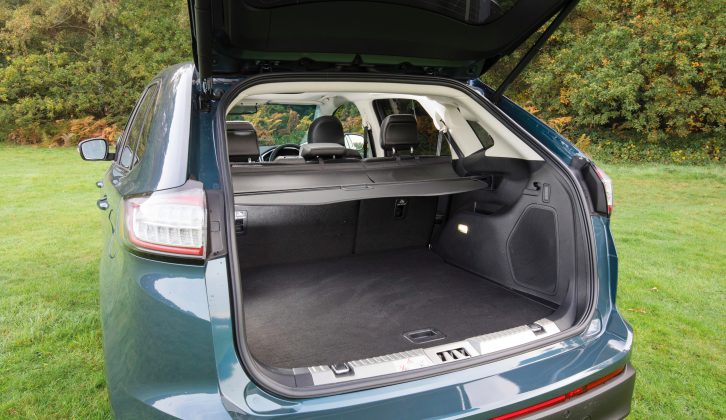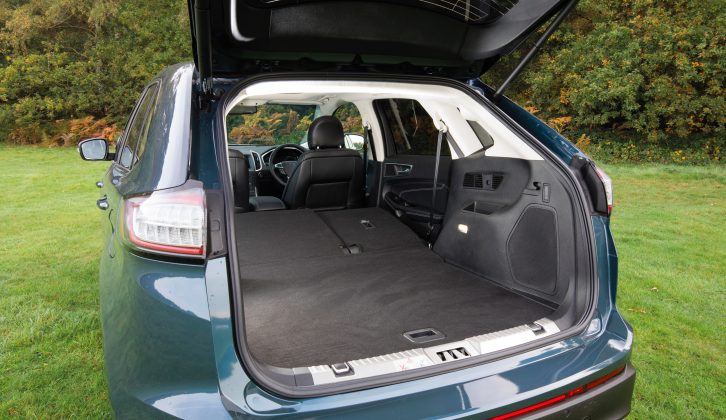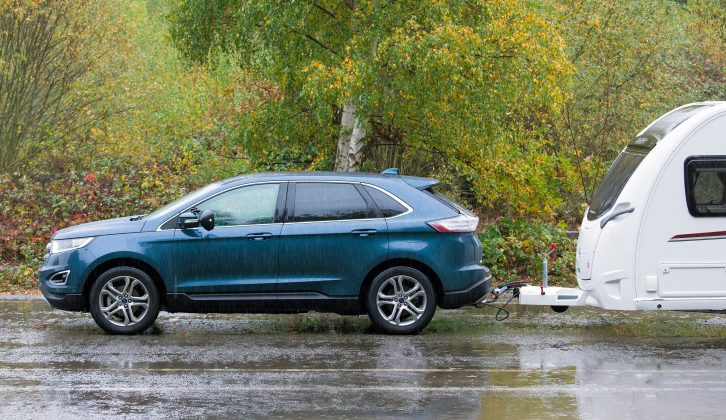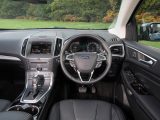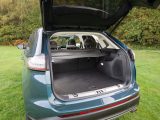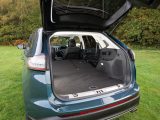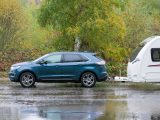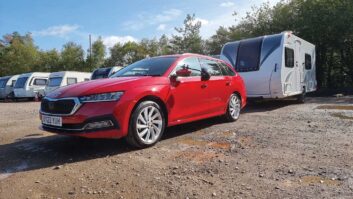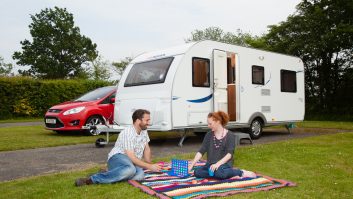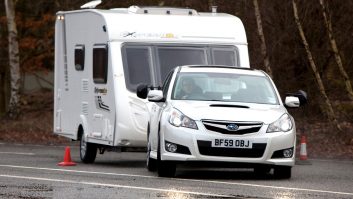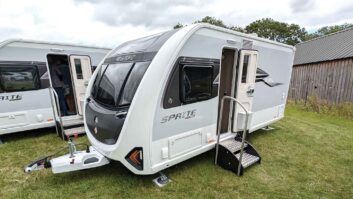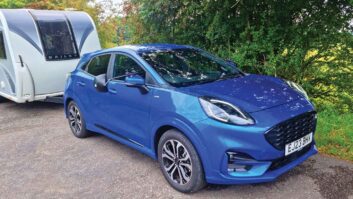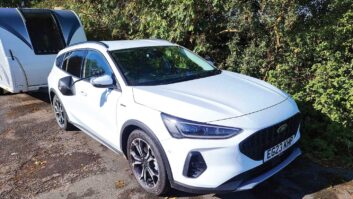Verdict
The Edge may not be as fun to drive as most Fords, but it’s still a capable car.
It’s stable and roomy, but with a high price-tag it’s up against very talented opposition.
Pros
As a tow car, it is comfortable and stable
Space for people and luggage is good
This Titanium-spec car is well-equipped
Cons
It doesn’t seat seven
It’s not an involving car to drive
It has a high price-tag
The Edge sits at the top of Ford’s range of SUVs, rivalling mainstream 4x4s such as the Hyundai Santa Fe and Kia Sorento, as well as prestige SUVs including the BMW X3.
In the UK, the Edge is available with a choice of two diesel engines. We’ve been towing with the more powerful, which has 207bhp and a PowerShift automatic gearbox.
At this price point there are lots of very capable 4x4s to choose from, so as well as finding out what tow car ability the Ford Edge offers, we need to see what it does to stand out from the crowd.
Rather than delivering a sporty drive, the Ford Edge prioritises comfort
Towing
The Edge makes a prudent match for a wide choice of caravans. The kerbweight of 1949kg gives an 85% match figure of 1657kg, while the legal towing limit is two tonnes.
You’d think from its power (207bhp) and torque (332lb ft) outputs that the Edge would be more than capable of towing a sensibly matched van at a brisk pace, but it feels lethargic at times.
More of the blame lies with the PowerShift ’box than the engine, because it’s keen to hold on to a high gear. Switching to ‘sport’ mode greatly improves things.
Bully the ’box into changing down and the Edge shifts along with determination, as the 30-60mph time of 11.8 seconds shows. That was achieved while pulling a Swift Conqueror 645 with a Mass in Running Order of 1615kg, an 83% match.
Once up to speed the Edge is very stable. Even in crosswinds while passing HGVs, the Ford kept its course without wobble.
The lane-change manoeuvre was more tricky, though. The car leaned heavily on its outside tyres, and we felt the Swift pushing.
It performed better in the braking test: the 11.1m stopping distance is impressive on a wet track. In normal towing it was easy to apply the brakes smoothly.
The electronic parking brake held car and caravan still on the 1-in-10 slope, and the car pulled easily to the top of the hill. However, there was some vibration through the seat and wheel when pulling away.
It’s a shame the ’box sometimes disguises the engine’s strength, and that the Ford wasn’t at home in the lane-change test. However, at speed the Edge is very secure.
Everyday Driving
So we know what tow car talent this SUV has, but what is it like as a solo drive?
The Edge doesn’t drive like a typical Ford: it’s less involving, and on twisting roads you’re often reminded of the car’s bulk.
The steering is light but slow to respond either side of straight-ahead, and although the Edge handles neatly, there’s not much in the way of fun. If you want a big car that nonetheless feels agile, you’ll prefer a BMW X3.
Rather than delivering a sporty drive, the Edge prioritises comfort, with a supple approach to all but the roughest roads.
It’s quiet as well as comfortable – Titanium-spec cars have acoustic glass, and all versions have what Ford calls ‘active noise control’.
The cabin remains hushed even at motorway speeds, and the four-cylinder diesel sounds distant.
As when towing, though, the Edge doesn’t feel all that quick. Again it’s down to the gearbox, which has to be persuaded to change down. If left in sport mode the gearbox is more responsive, but it then sometimes holds a low gear longer than necessary.
Space
The Edge is a big car, at just over 4.8m from bumper to bumper. Ford has made good use of that size to design a car that’s roomy for passengers and luggage.
However, unlike some rivals, the Edge is strictly a five-seater. Ford argues that there are other models in the range, such as the S-Max and Galaxy 4×4, for drivers wanting seven seats and four-wheel drive.
Those in the front have lots of head- and legroom, and the driving position is commanding.
Tall adults can sit comfortably in the back of the car, even if those in the front are lanky. The cabin is wide, and three can travel in the back without feeling hemmed-in.
Boot space is generous, with a 602-litre capacity when the rear seats are upright – with them down it increases to 1847 litres.
It’s a shame that the tailgate doesn’t lift higher: it’s easy for anyone tall to knock their head while loading the boot.
Running Costs
With its price-tag of more than £35,000, anyone buying the Edge could also consider a seven-seat SUV from Hyundai or Kia, or a 4×4 with a prestige badge, such as BMW’s X3.
However, upmarket rivals won’t match the Edge Titanium’s lengthy roster of standard kit, which includes 19-inch alloys, hands-free tailgate-opening, a nine-speaker stereo, sat-nav, heated front seats, front and rear parking sensors and more.
There’s plenty of safety kit, too, and a five-star rating from the safety experts at Euro NCAP.
This is a heavy, powerful car, so the 48.7mpg official combined economy figure is reasonable. We achieved 26.8mpg while towing.
Technical Specifications
| Engine Size | 1997 cc |
| Kerbweight | 1949 kg |
| 85% KW | 1657 kg |
| Towball Limit | 90 kg |
| Maximum Towing Limit | 2000 kg |
| Power | 207 bhp |
| Torque | 332 lb ft |
| Offical MPG | 48.7 mpg |
| CO₂ | 149 g/km |
